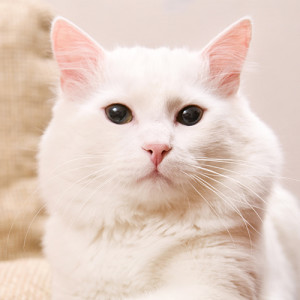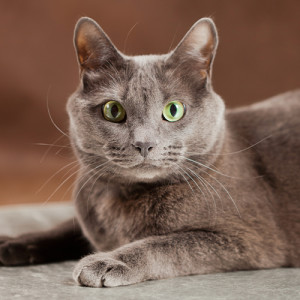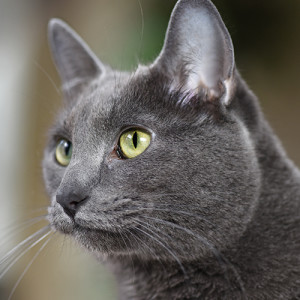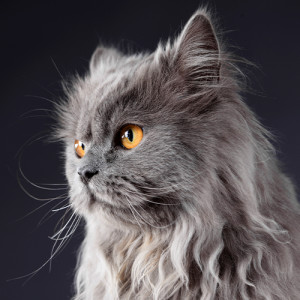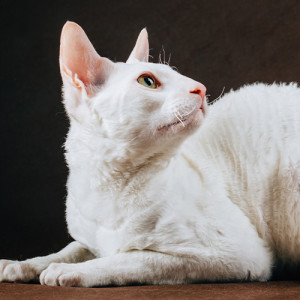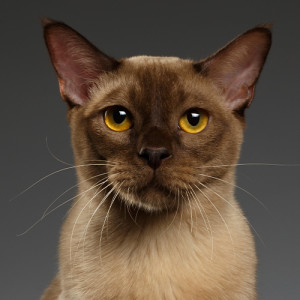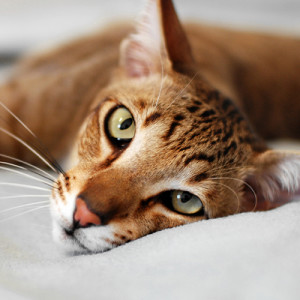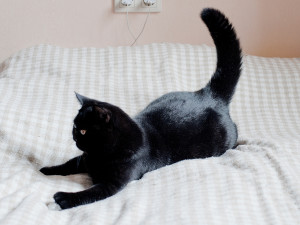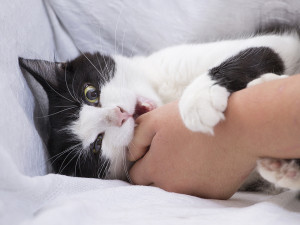The Cat Breed-Behavior Connection
Which cats are more likely to have stranger danger? Bite the hand that feeds them? Do the zoomies? Scientists studied 5,700 pet cats and discovered some interesting traits.
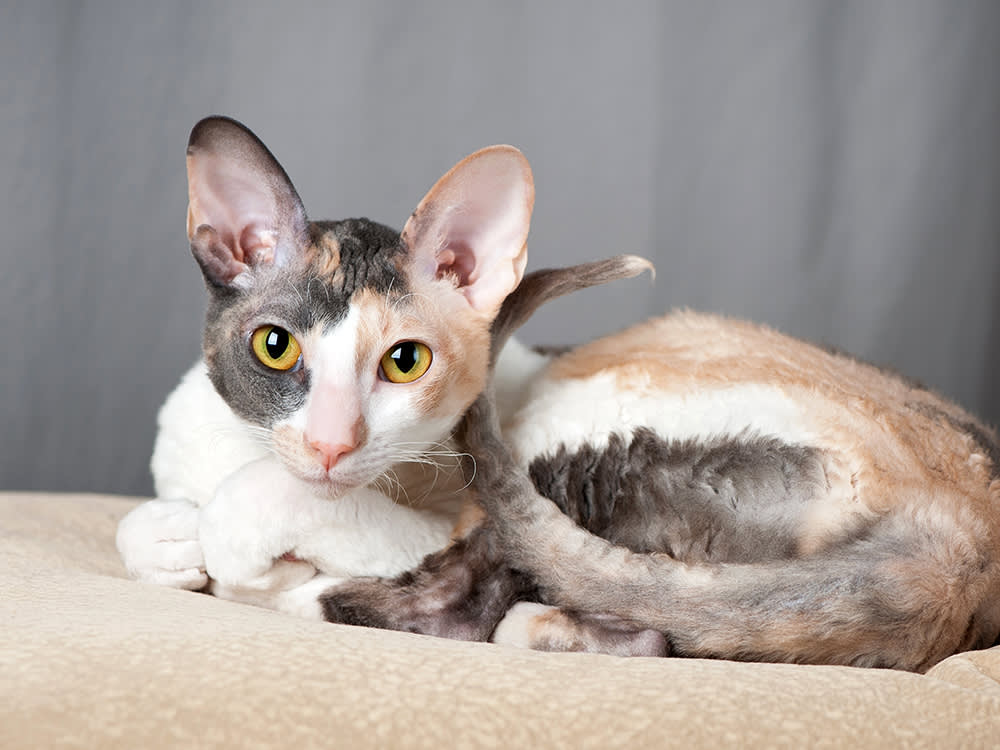
share article
The internet is full of articles extolling the virtue of one cat breed over another — preying on our collective anxieties about which cats are best for families with small children, or best behaved, or the most aggressive... The problem with these articles is that they are rarely, if ever, backed up by actual, hard evidence. I’m talkin’ data. Charts. Research! Instead, they are too often based on the testimonials of cat breeders, who have a vested interest in making their breeds look good, or, believe it or not, veterinarians or behaviorists, who are basing their opinions on anecdotal evidence, rather than rigorous scientific research.
Thanks to the hard work of a small group of scientists, the true links between breed and behavior in cats were finally uncovered a few years ago. Milla Salonen, Katariina Vapalahti, Katriina Tiira, Asko Mäki-Tanila, and Hannes Lohi gathered data from more than 5,700 pet cats in Finland, across 19 breeds, and determined the probability of everything from excessive grooming to aggression. It’s pretty interesting stuff and you can read their full findings hereopens in a new tab — although I have to warn you, like most scientific papers, it is painfully, devastatingly dull. I actually took a nap halfway through reading it. So you’re probably better off just checking out my summary below.
It’s also worth noting that the scientists were careful to account for general and environmental factors — such as age, sex, weaning age, access to the outdoors, and the presence of other cats in the home — that might also impact a cat’s behavior. In other words, they did their best to limit the possibility of their data being corrupted by conflated variables that had nothing whatsoever to do with breed.
1. Probability of Aggression Towards Family Members
Highest: Turkish Van, Angora, Korat
Lowest: British Shorthair, Abyssinian (including Somali and Ocicat), Oriental breeds (Balinese, Oriental Longhair, Oriental Shorthair, Seychellois Longhair, Seychellois Shorthair, Siamese)
If you’re ever been petting your cat and they suddenly hiss at youopens in a new tab — or worse, bite youopens in a new tab — they may just be over it or overexcited. Behaviorists call this “petting-induced aggression” and believe that it’s caused by repetitive contact. In other words, your cat will allow you the privilege of petting them but only so much. Don’t take it personally — just pay attention to their body language and ease up on the affection when they show signs of feeling smothered.
2. Probability of Aggression Towards Strangers
Highest: Turkish Van, Angora, Korat, Devon Rex
Lowest: British Shorthair, Persian, Cornish Rex
3. Probability of Shyness Towards Strangers
Highest (hides from strangers): Russian Blue, Domestic Shorthair (a.k.a. house cat or mixed-breed cat), Bengal
Lowest (super social): Cornish Rex, Burmese, Burmilla
4. Probability of Aggression Towards Other Cats
Highest (loner): Turkish Van, Angora, Korat
Lowest (plays well with others): Persian
The best way to avoid aggression between pets in a multi-cat household is by setting them all up for success with slow, proper, carefully orchestrated introductionsopens in a new tab.
5. Probability of Decreased Contact
Highest (more introverted): British Shorthair, Saint Birman, European Shorthair, Persian
Lowest (more extroverted): Oriental breeds, Devon Rex, Korat
6. Probability of High Activity Level
Highest (more energetic): Cornish Rex, Korat, Bengal
Lowest (less energetic): British Shorthair, Ragdoll, Saint Birman
Keep in mind, though, cat zoomiesopens in a new tab are a natural, normal behavior for all cat breeds.
7. Probability of Shyness Toward Novel Objects
Highest (afraid of new things): Russian Blue, Domestic Shorthair (a.k.a. house cat or mixed-breed cat), Turkish Van, Angora
Lowest (curious about new things): Devon Rex, Persian, Cornish Rex
8. Probability of Wool Sucking
Highest (most likely to suckle): Domestic Shorthair (a.k.a. house cat or mixed breed), Norwegian Forest Cat, Turkish Van, Angora
Lowest (least likely to suckle): Persian, Russian Blue
Wool sucking is when cats literally suck on things — blankets, sweaters, shoelaces, bathmats, even another cat’s tail or paws. It is sometimes linked to anxiety and although it is generally harmless, if your cat swallows something they can’t digest, it may require serious medical intervention.
9. Probability of Excessive Grooming
Highest: Burmese, Oriental, Cornish Rex
Lowest: British Shorthair, Persian
If your cat is overgroomingopens in a new tab, hawking up hairballsopens in a new tab more than usual, or is losing hairopens in a new tab, you should see your veterinarian to rule out an underlying health issue.
10. Probability of Owner-Evaluated Behavior Problems
Highest: Oriental, Persian
Lowest: European Shorthair, British Shorthair
All of this is not to say that breed alone dictates a cat’s personality. Far from it. A cat’s personality will often change over time or as their surroundings change. And cats, like humans, are often greatly impacted by the treatment they receive early in their lives. For instance, while the researchers for this study found that purebred cats were generally less aggressive towards other cats than mixed-breed cats, they attributed this trend less to the cats being purebred than to the fact that pedigree cat breeders in Europe tend to invest more time socializing kittens. There is still more research to be done on the link between breed, environment, and behavior in cats — something the scientists behind this study are already working on.

Charles Manning
Charles Manning is an actor, writer, and fashion/media consultant living in New York City with his two cats, Pumpkin and Bear. Follow him on Instagram @charlesemanningopens in a new tab.

